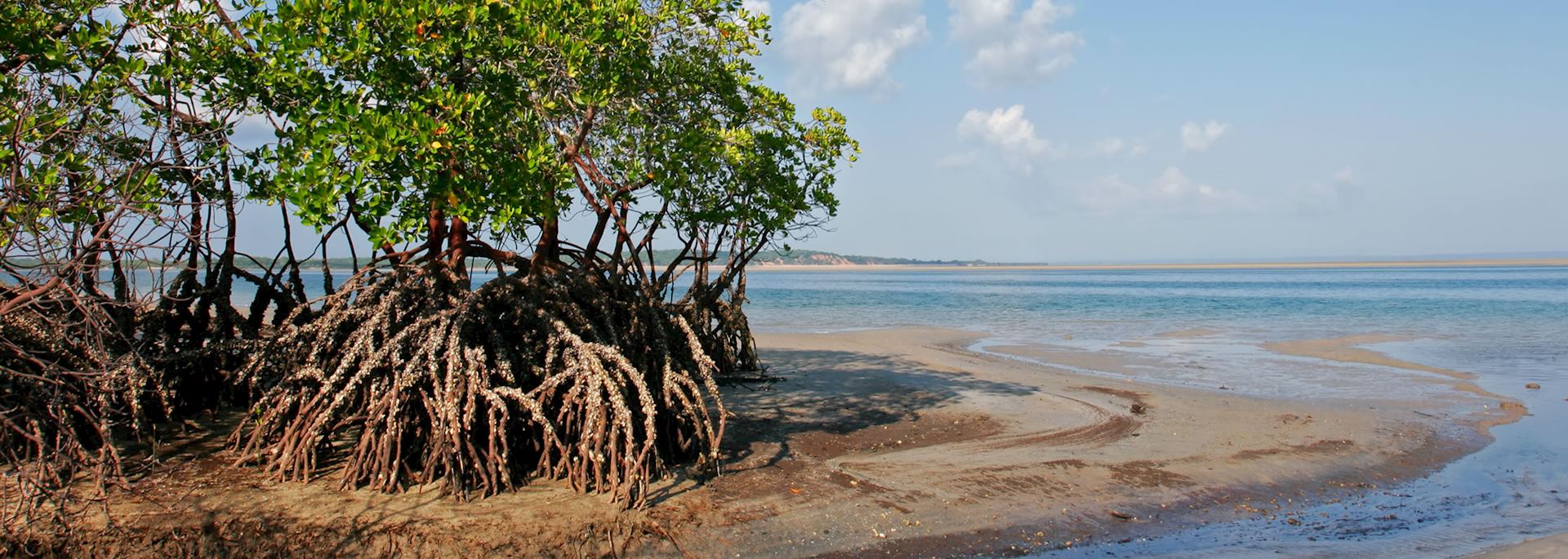Nacala and the surrounding area has until very recently been too remote for those other than the hardiest of backpackers to reach.
Unspoilt coastline
There is only one tarmac road leading to Nampula, where a small airport is located. Off this, rutted sandy tracks lead to remote villages where the Macua people live from subsistence farming. The coast is unspoilt with miles of sandy beaches backed by mangroves and subtropical bush. Offshore there are as yet un-dived reefs and shipwrecks underneath the sea. Whales migrate through the area from July to September and dolphins are frequently seen.
There are three main areas in this region to explore — the Ilha de Moçambique, La Veranda Nature Reserve and the Baixo do Pinda Peninsula.
Colonial history
Ilha de Moçambique is a designated UNESCO World Heritage Site. Reached by a long bridge this tiny island is fascinating. Around two miles long and 500 meters wide it has an old Portuguese colonial town on it. Known as the Stone Town this was once the capital of Portuguese East Africa and as such has beautiful old churches, trading houses, a hospital and more. Now some of the crumbling buildings are being beautifully restored. At the far end of the town a large village sprawls down to the shore.
Local culture
South of Ilha de Moçambique, La Veranda is a privately owned nature reserve that encompasses mangrove forests, dunes and white beaches. It is a ten-minute boat ride from the island on a remote spot of the mainland. There is one small boutique hotel on the reserve. Nearby the two villages of Cabaceira Grande and Cabaceira Pequena are home to the Macua people. Because of their remote location the inhabitants of these two villages lived in isolation for many centuries. This isolation has sheltered the Macua people from civil war but it has deprived them of schooling and medical services. A writer, Lisa St. Aubin de Terán, visited this area in 2003 and you can read about her experiences in her book, 'Mozambique Mysteries'.
North of Nampula is the remote Baixo do Pinda Peninsula. Here, you find white beaches backed by subtropical bush in which grows a number of baobab trees. Farming and fishing villages of the Macua are dotted around and dhows are a common sight on the sea. There is one small lodge in this area which can be used as a base from which to explore.
who's been there
-
617-223-4521617-223-4345
- Make an inquiry


